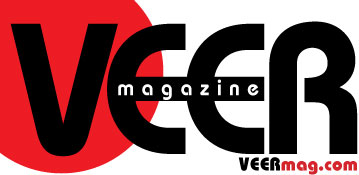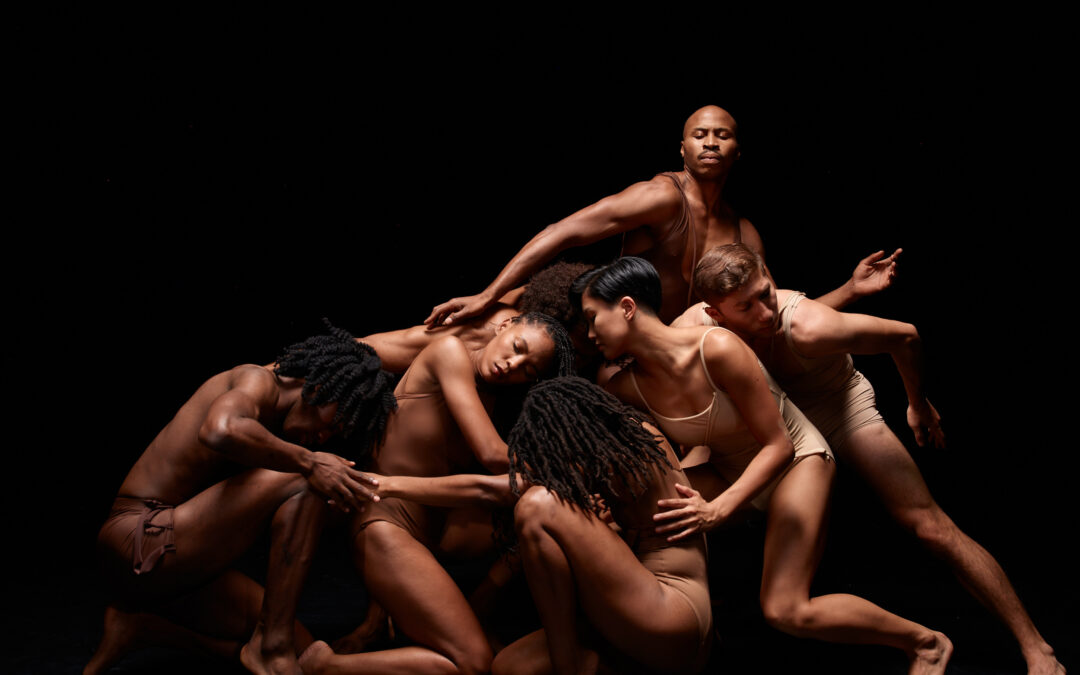By Kate Mattingly
In a recently posted video that’s part of Katie Couric’s “Thank You Notes” series, Judith Jamison, director of the Alvin Ailey American Dance Theater (AAADT) from 1989 to 2011, listens to AAADT dancer Khalia Campbell thank her for her support. There was a time when Khalia was unsure of her abilities and artistry, and often stood in the back of a dance studio.
Ms. Jamison, with her regal voice and astute insights responds, “We already did the back of the bus. Come on now: You’re not in the Alvin Ailey American Dance Theater to run that trip again. You are here to shine!”
“Shine” is a verb that encapsulates Khalia’s radiant dancing, and it’s hard to fathom that there was ever any doubt about her capabilities. From April 25 to 30, Hampton Roads audiences have a chance to see Khalia and all 32 of the AAADT dancers in events that are part of the Virginia Arts Festival.
Asked about her prior self-doubts, Khalia explains, “I started in a little dance school called Uptown Dance Academy, and at about the age of nine, I started to really take dance seriously and realized I could actually do this as a profession.” Khalia’s teachers were Hanan Hameen and the academy’s founder/director Robin Williams.
“They trained us to be able to do everything,” says Khalia. “Classes were a fusion of things like ballet and jazz mixed together. When I got to LaGuardia High School, I was introduced to more styles of dance that I had not practiced growing up. I think that’s where the insecurity started because I was put into the highest level for the freshmen. But deep down inside, I was like, ‘Whoa, I don’t know if I’m supposed to be here.’ So, I found my place in the back of the class because that’s where I felt safe. I felt like if I messed up, no one would see.”
In 2015, when Khalia was a student in The Ailey School, Ms. Jamison saw her perform at SummerStage in The Wiz, created by George Faison. Khalia was performing the role of the Eye of the Tornado and remembers, “Ms. Jamison told me she saw a side of Khalia that was missing in classes. She was kind of like, ‘This doesn’t make any sense’ because Alvin Ailey created a space for me, for a woman of color, to thrive and really be in our glory.”
Khalia credits her success to Ms. Jamison and a pantheon of teachers (who are also great choreographers and performers): William Isaac, Sarita Allen, Darrell Grand Moultrie, and George Faison. Khalia says, “They spoke life into me, reminding me of what I have.” Khalia adds she’s Christian, “I allow Him to tell me who I am, what my worth and my value are, and what a gift He has given me.”
Speaking about the repertory that will be performed at the Ferguson Center and Chrysler Hall, Khalia says music plays a huge role: For Four, choreographed by AAADT’s current director Robert Battle, is set to music by Wynton Marsalis. Survivors, choreographed by Ailey with co-choreographer Mary Barnett, evokes the story of Nelson and Winnie Mandela, and is set to music by Max Roach. Are you in your Feelings?, which Khalia describes as “a celebration of Black culture,” is choreographed by Kyle Abraham and has “a mix-tape” of music that includes The Flamingos, Lauryn Hill, and Drake. Revelations, the dance company’s signature work, is performed to Negro Spirituals.
Asked if she ever doubts her abilities today, Khalia says she has overcome those insecurities. Part of the journey toward trusting herself has been letting go of the “perfectionist” mindset that thinks “I don’t want to mess up.” When she’s in this headspace, she realized she’s actually focusing on other people (not herself) and wondering if “they are judging me.”
Today, she reminds herself, “You’re human, and this is what being in a process is all about. It’s about making mistakes, and inspiring other people to make mistakes, in order to grow into who we’re meant to be.”
One reason why AAADT performances attract huge audiences around the world is the phenomenal versatility of the dancers, who are exceptional in choreography that demands jazz, ballet, modern, and hip hop techniques. Khalia says this range of vocabularies comes from Ailey’s belief that “dancers are able to do everything. He wanted dancers who can do whatever is thrown at them. We do choreography that is ballet, and we do dances of the African diaspora.”
Asked how she maintains these different techniques, Khalia says, “I do my research, and I credit my upbringing, which valued different styles. I also know, if I’m doing an Alonzo King piece, I have to be in ballet class. That’s my research. Plus, I’m watching old videos, and asking for notes from the rehearsal director. That’s the work.” This also helps shift the “perfectionist” mindset and embrace the uncertainty and vulnerability of learning new skills.
In many ways, Ailey was a visionary who advocated for dancers to possess a range of styles during a time when other modern dance companies, like those of Martha Graham and José Limón, primarily performed one technique. Khalia says this range “helps us to not become complacent. It feels exciting to travel from style to style, and it expands our artistry. Plus, we live in a world where you kinda have to be able to do everything.”
Ailey was not only ahead of his time in creating this multifaceted company, but he was also thoughtful about the future of dance. As Khalia explains, “If I do ballet and there’s a little Black girl who sees me and wants to be a ballet dancer, she’s like, ‘Oh my gosh! I can do this.’ If there’s another Black girl who’s training in West African dance, and I come out and do African techniques, she’s like, ‘Oh my gosh!’ This versatility helps us to be relatable to the future.”
Patrick Coker, an AAADT dancer, echoes this idea during an interview in late March. “We’re not only relatable to the future, but we’re also anchors for our histories. Our past both grounds us and propels us forward.”
Patrick will dance both new and historic choreography when AAADT performances include DUET, made by Paul Taylor in 1964. The piece was staged by an acclaimed dancer, Carolyn Adams, who performed with the Paul Taylor Dance Company from 1965 to 1982, and is now a mentor for Robert Battle, AAADT’s artistic director.
“Carolyn and Alvin Ailey had a special relationship,” explains Coker. “Carolyn never danced in the Ailey company. She was a Black woman in a predominantly white company, but she and Alvin crossed paths, and she told us that Alvin once said, ‘I respect the work you are doing and I really commend you.’ That moment gave her a sense of purpose because she felt seen. So, to learn this piece from her was a full circle moment: she set a work that she danced with Paul Taylor for the legacy that Alvin has built.”
For Patrick, the Virginia Arts Festival is also a full circle moment: he grew up in Chester, Virginia, and has a beautiful cat named “Chester” who made an appearance during our Zoom interview. As a student of Sandra Balestracci, who directed the Eastern Virginia School of Performing Arts, Patrick performed in The Nutcracker at the Ferguson Center when he was in high school. He also made special appearances as a very young dancer––around age 11––during half-time shows for basketball games at Christopher Newport University. “My grandfather was a professor at CNU and lived in Newport News,” says Patrick. “My grandparents were huge basketball fans!”
He’s excited that family members, and Sandra Balestracci, can come to the shows and see him dance both DUET and Kyle Abraham’s Are you in your Feelings? “The process of working with Kyle meant so much to me and my peers” explains Coker. “Kyle came in and trusted everyone, and had a clear idea of what he wanted to say. He talked about how this work was his love letter to Black culture. This piece truly exemplifies the power and beauty of the community that is our company, and I feel really honored to take part in bringing Kyle’s vision to life.”
Patrick pauses, then adds, “One of the things that I love about being an Ailey dancer is the range of choreography: within a given week, within a given day, within a given show, I am asked to do work that spans from Revelations [1960] to Are you in your Feelings? [2022]. For me, the commonality between Kyle’s work and the Paul Taylor piece is that both processes were really inspiring, really fulfilling.”
A note that Carolyn Adams gave Patrick when he first performed Taylor’s DUET noted his distinguishing characteristics: “a very specific work ethic and the care you bring to your work as a dancer, and the people that you dance with.”
This quality of caring permeates our conversation, which spans from dance in Virginia, to the AAADT repertory, to Patrick’s work as a choreographer: the thoughtfulness that Patrick brings to each topic is extraordinary. Reflecting on his Japanese ancestry, Patrick describes how he lost his grandmother just after he was invited to join AAADT, “What’s interesting is that she was my living connection to my Asian ancestry, and she passed as I began rehearsing work, like Revelations, that is guided by history and that brought up deeper curiosities about my heritage. I think my identify informs my work as a dancer because this repertory asks you to share who you are and where you come from. Our individuality is timeless, and I’m grateful to be a part of this community that celebrates all aspects of the Black experience and the human experience simultaneously.”
While AAADT’s performance this month present a great spectrum of choreography, one thing that’s notably missing is women as choreographers. While Robert Battle has commissioned terrific additions to the company’s repertory, women have not been invited to choreograph as often as men. This is especially noticeable when many skilled women, like Jennifer Archibald, whose choreography was recently enjoyed by Hampton Roads audiences, are making work that speaks to wide audiences and highlights dancers’ prowess. Hopefully AAADT performances in the Virginia Arts Festival are enjoyed by sold-out audiences, and the company decides to make another visit with new repertory soon.
WANT TO GO?
Alvin Ailey American Dance Theater
Tuesday, April 25 Ferguson Center for the Arts, 7:30pm
Friday and Saturday, April 28 to 29, Chrysler Hall, 7:30pm
Sunday, April 30, Chrysler Hall, 3:00pm




